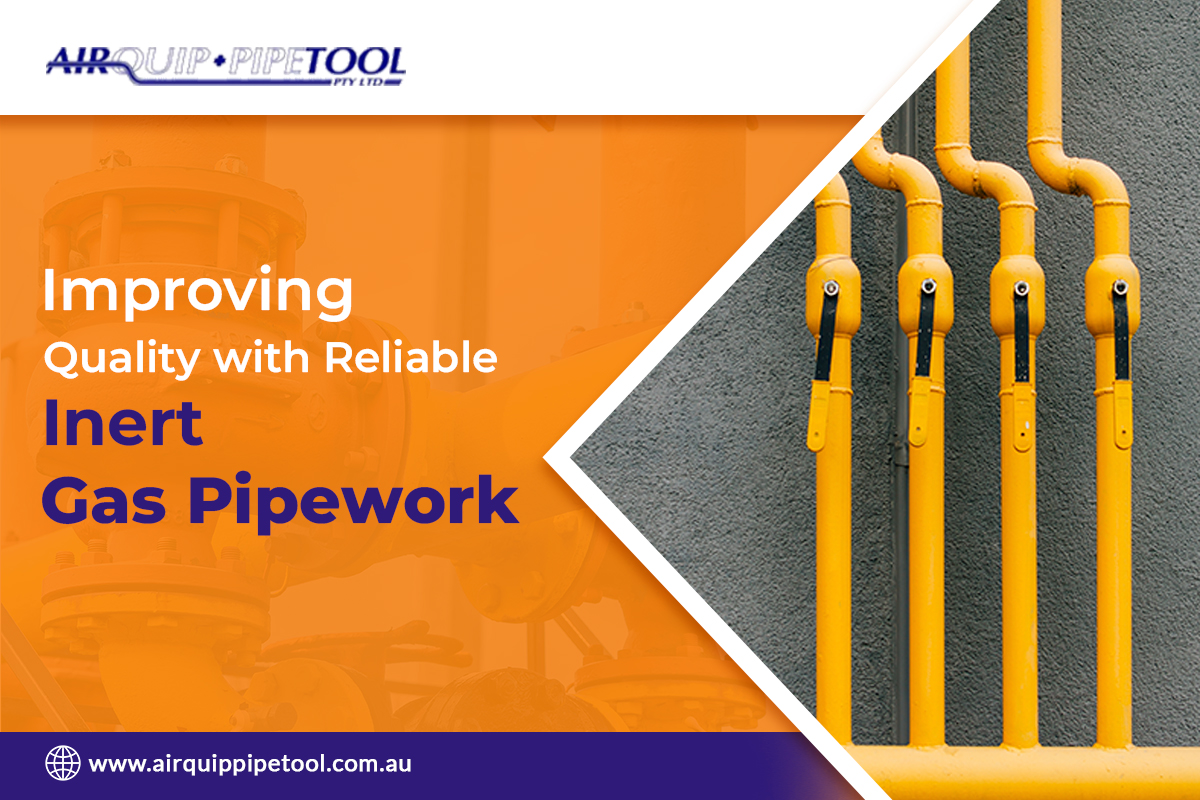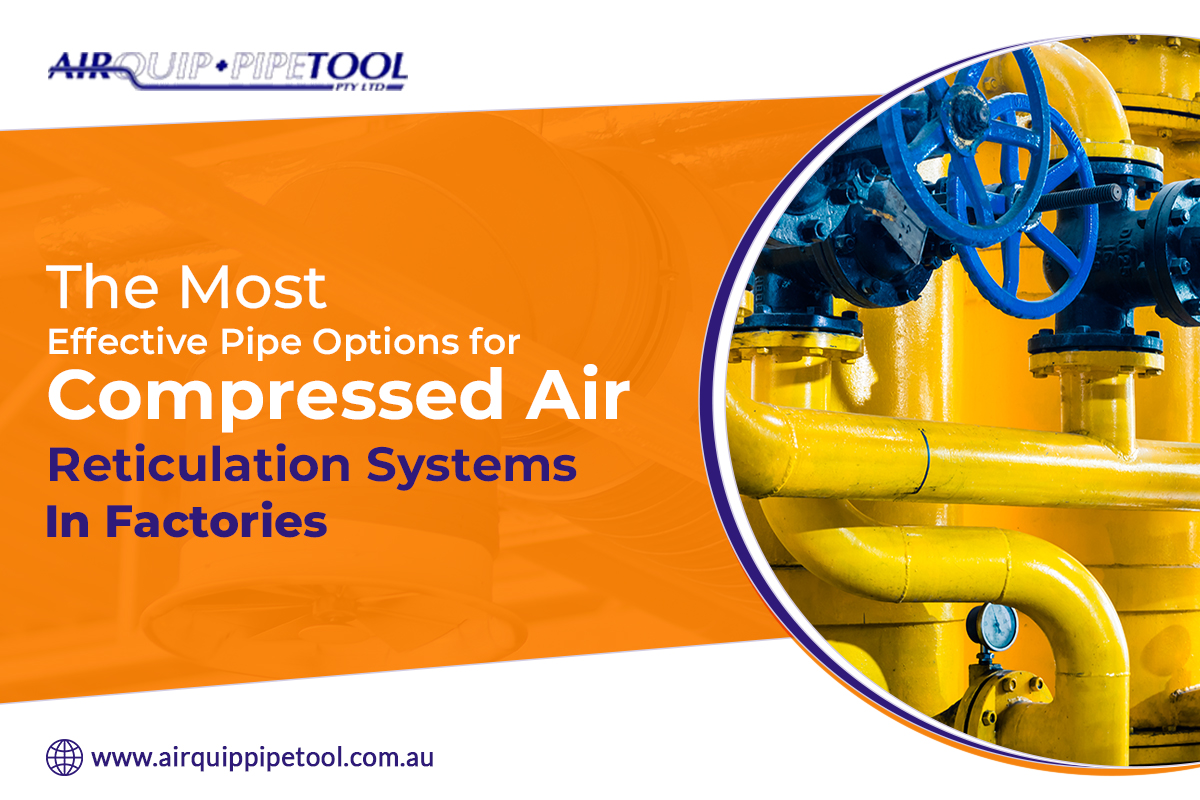- by airquippipetool
- . 28 Feb 2025
How to Prepare an Effective Compressed Air Pipe Work Distribution System? – Expert Tips
When it comes to installing piping for a compressed air pipework system, selecting the right material is crucial to the performance, longevity, and safety of your system. While PVC (Polyvinyl Chloride) pipework is a popular choice for low-pressure applications—such as water supply and stormwater drainage—it can pose significant risks when used in high-pressure environments, particularly in compressed air systems.
At Airquip, we understand that the safety and efficiency of your system rely on using the right materials for the job. In this post, we’ll explore the dangers of using PVC pipework for pressurized systems, especially compressed air, and why you should avoid it for these critical applications.
One of the most significant issues with using PVC pipework in compressed air systems is its tendency to become brittle over time. PVC is a rigid material, and while it’s fine for transporting water under low pressure, it doesn’t fare well in pressurized systems where pressure cycles (the repeated pressurization and depressurization of the pipe) are common.
When a PVC pipe is subjected to constant pressure fluctuations, it can suffer from a process called embrittlement. Over time, the repeated pressure cycling causes the material to degrade, making it more prone to cracking and breaking. The higher the pressure, the more significant this risk becomes. When PVC pipes become brittle, they are more likely to fail, leading to potential explosions or burst pipes, which can cause significant damage to equipment and property and even pose a serious safety hazard.
Another major issue with PVC in pressurized systems is its heat resistance. When compressed air moves through pipes, the process generates heat. Compressed air, unlike water, does not naturally carry away thermal energy. Instead, it can heat up the pipework over time. This increase in temperature can make PVC pipes unstable, as they soften and lose their structural integrity at elevated temperatures.
PVC has a relatively low tolerance for heat, with most grades starting to deform at temperatures above 60°C. In a compressed air system, the pipework could easily exceed these temperatures, especially if the air is not properly cooled before being transported through the system. As the pipe softens, it becomes more susceptible to bulging, warping, or bursting, creating a serious safety risk. In addition to this, the flexibility that PVC lacks under heat means it cannot expand or contract effectively in response to changes in pressure or temperature, making the system less stable overall.
PVC pipes are commonly used outdoors, but they are not well-suited for exposure to ultraviolet (UV) light. When exposed to UV radiation from the sun, PVC undergoes photodegradation, which leads to the breakdown of its chemical structure. This results in the material becoming more fragile, prone to cracking, and less able to withstand the internal pressure of the system.
While water systems may not be directly impacted by UV exposure as much, compressed air systems can be far more sensitive. If PVC pipework is used in external or partially exposed settings, UV degradation can significantly reduce the lifespan and safety of the system. Cracks and brittleness in the pipe can lead to unexpected failure and the release of high-pressure air, which is extremely dangerous in a workshop or industrial environment.
Perhaps the most alarming risk of using PVC in compressed air systems is the potential for explosions or catastrophic bursting. Due to its rigidity and lack of flexibility, PVC pipe does not have the ability to absorb sudden pressure surges or withstand the kinds of stresses that come with high-pressure systems. If PVC pipework is subjected to pressure beyond its tolerance limit, it is likely to fail explosively
When PVC pipes fail in this way, they can shatter, sending shrapnel throughout the surrounding area. This poses a significant explosion hazard, with the potential for serious injury, equipment damage, and even fatalities. In high-pressure compressed air systems, which can operate at pressures of 8 bar or more, the risks are compounded. Pressure surges—such as those caused by equipment startups, valve failures, or blockages—can rapidly escalate, and PVC pipe simply cannot handle the pressure extremes.
PVC pipes are often chosen for water supply systems because water has a cooling effect on the pipework. Water helps to carry away the heat generated by the flow, which helps prevent the pipe from overheating or becoming structurally compromised. Additionally, water is typically a low-pressure medium that places less strain on the pipes
However, compressed air systems are a completely different environment. Air, especially when compressed, tends to heat the pipe rather than cooling it. This results in thermal instability for the pipework, and because PVC cannot handle the heat generated by compressed air, it becomes a serious risk for failure. The high-pressure nature of compressed air further exacerbates the issue, making PVC unsuitable for these types of applications.
For pressurized systems, especially compressed air, materials like steel, copper, or specialized industrial plastics (such as Pex or polyethylene) are far more suitable. These materials are designed to withstand the high pressures, temperature fluctuations, and mechanical stresses that come with compressed air systems. They offer better heat resistance, impact strength, and long-term durability, ensuring that your system remains safe and reliable over time.
At Airquip, we specialize in installing compressed air pipework and fluid systems with the right materials for every job. We understand the unique demands of compressed air systems and ensure that every pipework installation service is done to the highest safety and performance standards.
By avoiding risky materials like PVC and using only the most reliable, pressure-rated materials, we help you maintain a safe, efficient, and long-lasting compressed air system. Whether you’re looking for system design, pipework installation services, or maintenance, we have the experience and expertise to provide the best solutions for your needs.
Contact Airquip today to learn more about our pipework installation services and how we can help you create a safe, reliable compressed air system that meets the highest standards.
 " alt="">
" alt="">
How to Prepare an Effective Compressed Air Pipe Work Distribution System? – Expert Tips
 " alt="">
" alt="">
 " alt="">
" alt="">
The Most Effective Pipe Options for Compressed Air Reticulation Systems in Factories



Copyright © 2025 airquippipetool | All rights reserved